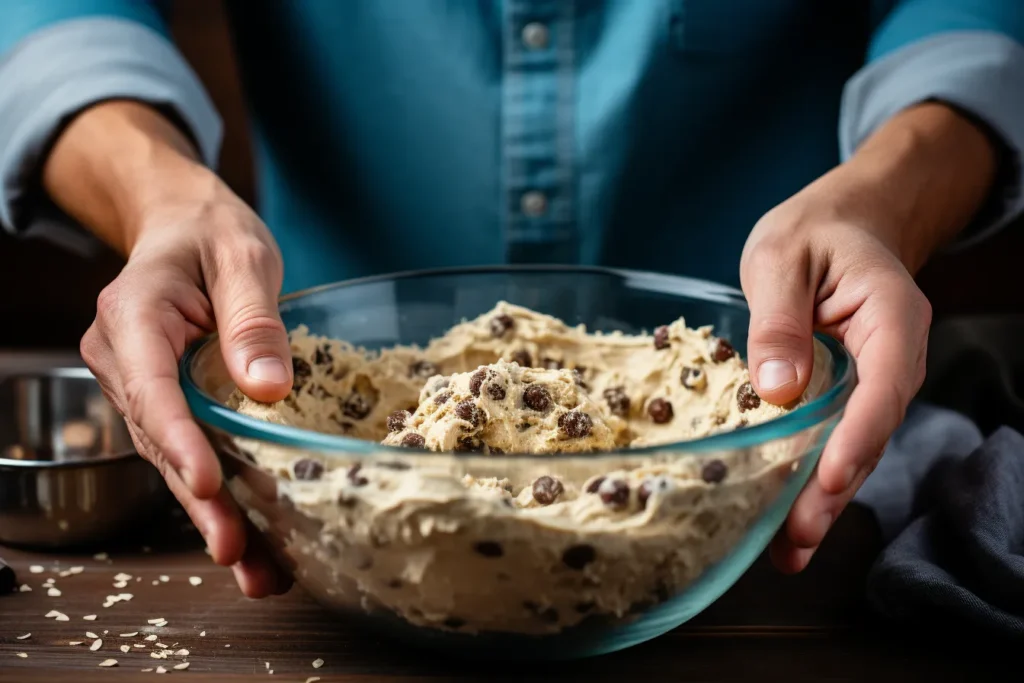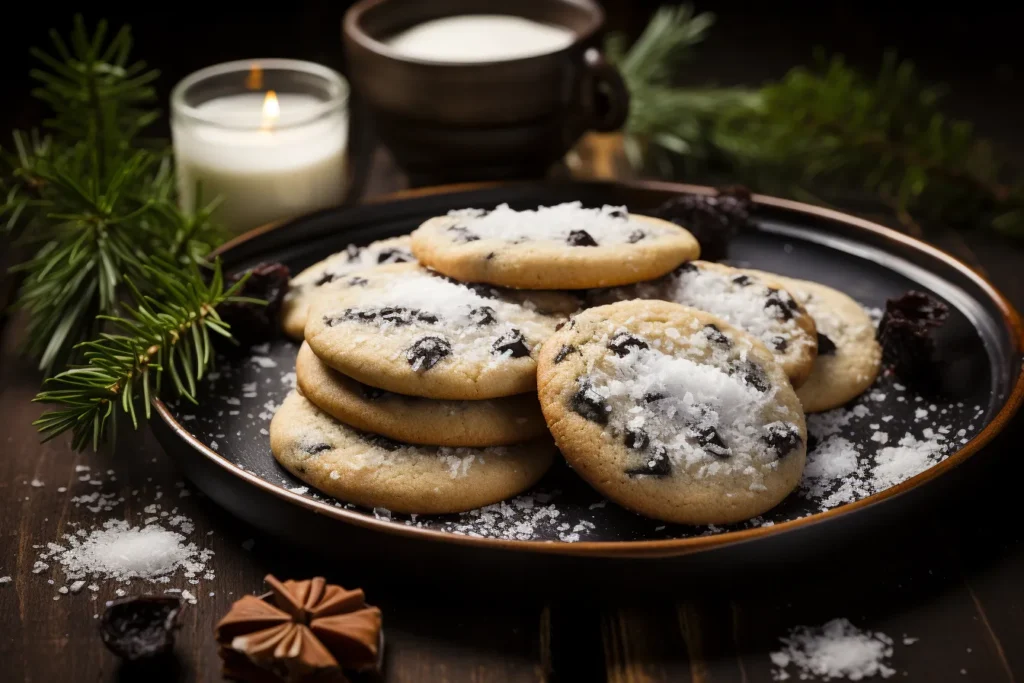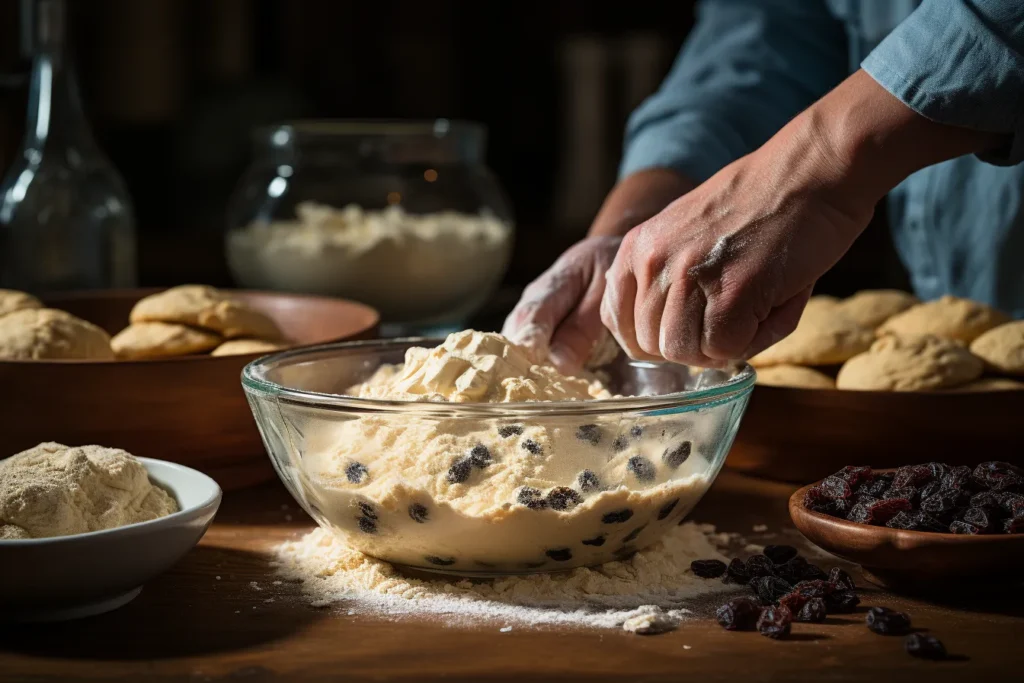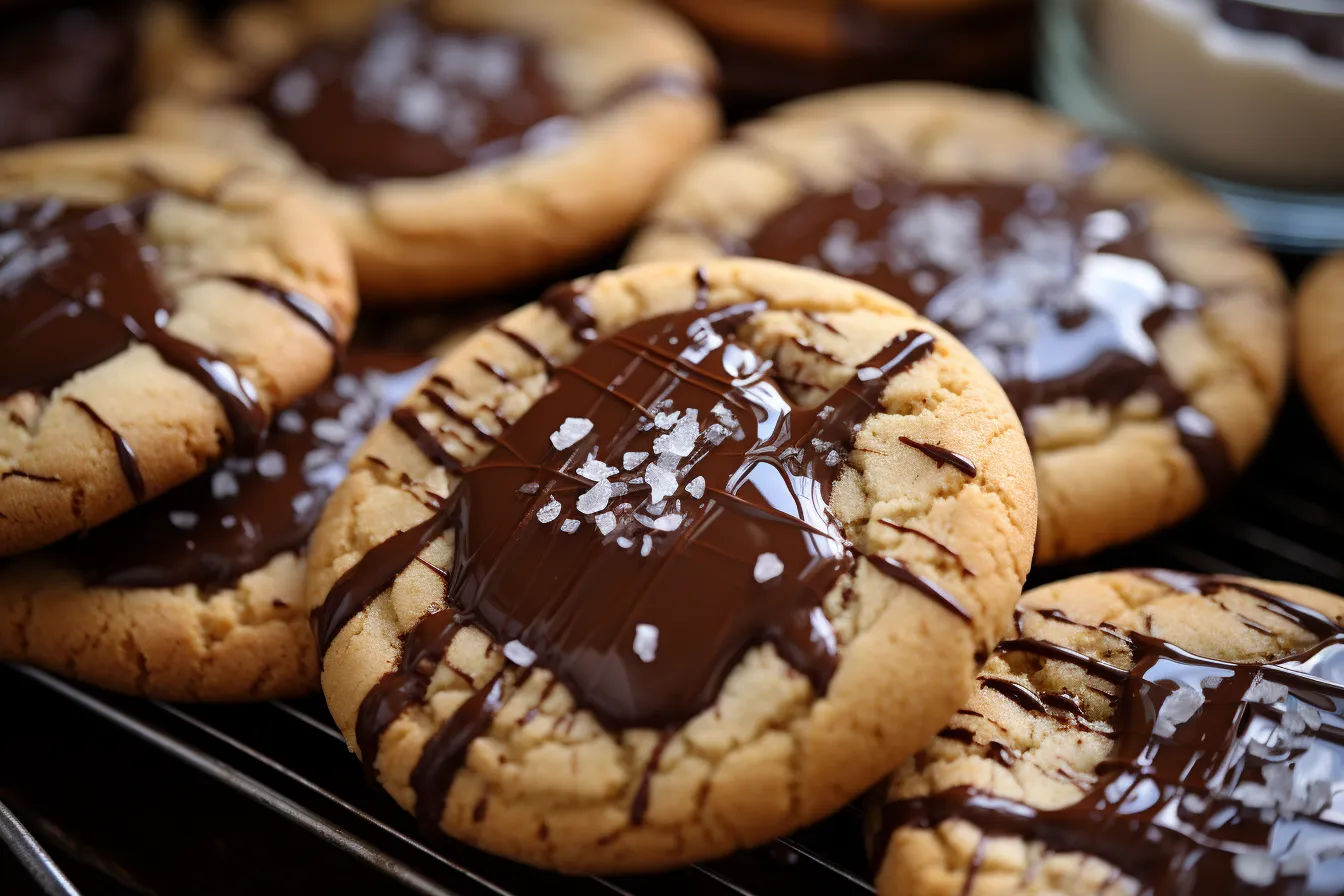Introduction : Gluten-Free Cookie Recipe Guide
Craving cookies but need to avoid gluten? This Gluten-Free Cookie Recipe Guide will show you exactly how to modify traditional recipes into allergy-friendly delights. With a few strategic swaps and the right techniques, you can bake cookies that are just as soft, chewy, and delicious as their gluten-filled counterparts. Whether you’re baking for dietary needs or exploring gluten-free options, this guide has everything you need to get started.
We’ll cover the role of gluten in baking, how to select the best flour alternatives, and essential tips for perfect gluten-free cookies. From understanding ingredient adjustments to preventing common mistakes, this guide ensures your baking journey is a success. Ready to transform your favorite treats? Let’s dive into the ultimate Gluten-Free Cookie Recipe Guide!

Understanding Gluten in Baking
What Is Gluten and Why It Matters for Gluten-Free Cookie Recipes
Gluten is a protein found in wheat, barley, and rye. Specifically, it gives dough its elasticity and helps baked goods hold their shape. In cookie recipes, gluten plays a key role in creating the structure and texture we love. For instance, it binds ingredients, traps air, and contributes to chewiness. However, without it, cookies can crumble or feel dry.
Additionally, for those with gluten sensitivities or celiac disease, consuming gluten can lead to severe health issues. Therefore, gluten-free baking is essential for creating treats that everyone can enjoy safely. Ultimately, understanding how gluten works is the first step toward successful gluten-free cookies.
The Role of Gluten in Cookies
In cookies, gluten development occurs when you mix wheat flour with liquids. As a result, the gluten strengthens as you knead or stir, which is why overmixing can make cookies tough. In gluten-free baking, this protein is replaced with alternative ingredients that mimic its binding and texture-enhancing properties. For example, flours like almond, oat, and coconut, combined with binders like xanthan gum, help fill the void left by gluten. Ultimately, these substitutions allow you to create cookies with the perfect texture and structure, without relying on gluten.
Table of contents

The Basics of Gluten-Free Baking
Common Flours for Gluten-Free Cookie Recipes
Switching to gluten-free baking starts with understanding flour alternatives. Here are some popular options:
- Almond Flour: Made from finely ground almonds, this flour adds a rich, nutty flavor and moisture to cookies.
- Coconut Flour: High in fiber, coconut flour absorbs liquids more than traditional flour. Use it in small amounts and adjust liquids accordingly.
- Oat Flour: This versatile flour, made from ground oats, creates a mild flavor and soft texture. Be sure to use certified gluten-free oats to avoid cross-contamination.
- All-Purpose Gluten-Free Flour Mixes: These blends are pre-mixed to replicate wheat flour and often include binders like xanthan gum. They are great for beginners.
Tips for Blending Gluten-Free Flours
No single gluten-free flour can fully replicate wheat flour. For the best results, combine multiple flours. Blending almond flour for moisture with tapioca starch for elasticity, for example, creates a balanced texture. Many gluten-free recipes provide specific ratios, so follow these closely for consistent results.
Essential Tips for Baking Gluten-Free Cookies
Having the right tools can simplify gluten-free baking:
- Digital Scale: Accurately measure flour substitutes, as their density can vary.
- Stand Mixer or Hand Mixer: Helps blend ingredients evenly, especially when working with thick doughs.
- Silicone Baking Mats: Prevent sticking and provide even heat distribution.
- Cookie Scoops: Ensure uniform sizes for even baking.
Can I Make These Cookies Gluten-Free?
Key Questions to Ask Before Modifying
Before jumping into a recipe conversion, consider the following:
- What is the role of flour in the recipe? Some cookies rely on gluten for structure (like sugar cookies), while others (like shortbread) don’t.
- Do I need a binder? Gluten-free recipes often require binding agents such as xanthan gum or psyllium husk to hold the cookies together.
- Are there liquid or fat adjustments needed? Gluten-free flours can absorb liquids differently, so you may need to increase or decrease the amount of milk, butter, or eggs.

Swapping Ingredients: Step-by-Step Guide
- Choose Your Gluten-Free Flour
Start with an all-purpose gluten-free flour mix. These blends are beginner-friendly and designed to mimic wheat flour. If you prefer single-origin flours, blend almond, tapioca, and rice flour in a ratio of 2:1:1. - Adjust Liquids and Fats
Gluten-free doughs can feel drier or crumbly. Add a tablespoon of milk or oil at a time until the dough feels pliable but not sticky. - Incorporate a Binding Agent
To prevent cookies from falling apart, mix in ½ teaspoon of xanthan gum per cup of flour. - Mix Carefully
Overmixing traditional cookie dough develops too much gluten, but in gluten-free baking, thorough mixing is key to ensure even hydration. - Chill the Dough
Gluten-free cookie dough benefits from chilling. It firms up and prevents spreading during baking.
Choosing Gluten-Free Flour Alternatives
Almond Flour
Almond flour is a popular choice for gluten-free baking. It’s rich in healthy fats and adds a slightly nutty flavor to cookies. Because of its coarse texture, it works best in recipes where moisture is key, such as chocolate chip cookies or soft snickerdoodles. To avoid dense cookies, combine almond flour with lighter flours like tapioca starch.
Coconut Flour
Coconut flour is another excellent option. It’s incredibly absorbent, so you’ll need to use it sparingly—usually one-fourth the amount of wheat flour in a recipe. Coconut flour works well in combination with eggs to create structure, making it perfect for chewy cookies.
Oat Flour
Oat flour provides a neutral flavor and a soft, delicate texture. Additionally, you can easily make it at home by grinding gluten-free oats in a blender until fine. For example, it’s ideal for recipes that need a smooth consistency, such as oatmeal cookies or sugar cookies. Moreover, its mild taste enhances these treats without overpowering other flavors. Ultimately, oat flour is a versatile option for creating tender, gluten-free cookies.
All-Purpose Gluten-Free Flour Mixes
Pre-blended gluten-free flour mixes are a lifesaver for beginners. In fact, these mixes often include a combination of rice flour, potato starch, and xanthan gum. Moreover, they’re designed to closely replicate the texture and behavior of wheat flour, making gluten-free baking much easier. For instance, you can use them in equal amounts as a one-to-one replacement for all-purpose flour in cookie recipes. Ultimately, these blends simplify the process, ensuring consistent results for delicious gluten-free cookies.
Modifying Your Cookie Recipe for Gluten-Free Baking
Adjusting Liquids and Fats
Gluten-free flours absorb liquids differently than wheat flour. To ensure your cookies stay moist and don’t crumble, adjust the liquid and fat content. Start by increasing liquids like milk or water by one to two tablespoons per cup of gluten-free flour. Similarly, adding a tablespoon of softened butter or oil can improve texture and help retain moisture.
Adding Binding Agents Like Xanthan Gum
Without gluten, cookies need help staying together. Therefore, a binding agent like xanthan gum, guar gum, or psyllium husk can fill this role. For example, add ½ teaspoon of xanthan gum for every cup of gluten-free flour in the recipe. However, for lighter cookies, use ¼ teaspoon instead. Additionally, if you’re using an all-purpose gluten-free flour mix, check the package—many blends already contain xanthan gum, eliminating the need to add extra. Ultimately, understanding these adjustments ensures perfectly structured gluten-free cookies every time.
Chilling the Dough
Gluten-free cookie dough tends to spread more during baking. Chilling the dough for at least 30 minutes (or up to 24 hours) helps the fat solidify and reduces spreading. This step is especially crucial for recipes like gluten-free chocolate chip cookies or sugar cookies, where shape matters.
Troubleshooting Common Issues
- Too Crumbly: Add a small amount of additional fat or a teaspoon of applesauce to improve cohesion.
- Too Dry: Increase liquids gradually until the dough reaches the desired consistency.
- Too Sticky: Dust the dough lightly with additional gluten-free flour to make handling easier.
Tips for Perfect Gluten-Free Cookies
Preventing Grittiness
One common complaint about gluten-free cookies is a gritty texture. This often happens with coarse flours like rice flour. To avoid this, use finely milled flours or let the dough rest for 20-30 minutes before baking. This resting time allows the flour to fully hydrate, resulting in a smoother texture.
Achieving the Perfect Texture
The key to soft and chewy cookies lies in balancing moisture and structure. Use a mix of flours, like almond or oat flour combined with tapioca or potato starch. Adding an extra egg yolk can also contribute to a chewier texture. For crispy cookies, reduce the moisture slightly and use more sugar, as it caramelizes during baking.
Avoiding Overmixing
Overmixing dough in traditional baking develops gluten, leading to tough cookies. While this isn’t a concern in gluten-free baking, overmixing can still introduce too much air, causing cookies to spread too much during baking. Mix just until the ingredients are combined.
Common Mistakes to Avoid
Incorrect Flour Ratios
Using too much or too little gluten-free flour can ruin the texture. Always follow the recipe measurements carefully and weigh your ingredients when possible. Gluten-free flours are denser than wheat flour, so precise measurements are essential.
Overcompensating with Liquids
Adding too much liquid in an attempt to fix dry dough can result in cookies that spread too much or feel gummy. Instead, adjust liquids gradually, a teaspoon at a time, to avoid this issue. Furthermore, it’s important to monitor the dough’s consistency closely, because even small changes can significantly impact the final texture. Ultimately, a careful approach ensures your cookies turn out perfectly every time.
Skipping Chill Time
Rushing the process and skipping the chilling step often leads to cookies that spread too thin. Plan ahead to give the dough enough time to firm up before baking.
Nutritional Analysis
Health Benefits of Gluten-Free Cookies
Gluten-free cookies can be a healthier option, especially for those with celiac disease, gluten intolerance, or wheat allergies. They often use nutrient-dense ingredients like almond flour, which is high in protein and healthy fats, or oat flour, which adds fiber. By baking your own gluten-free treats, you can also control sugar and fat levels for a more balanced dessert.
Sample Nutritional Breakdown
Here’s an approximate nutritional breakdown for a standard batch of gluten-free chocolate chip cookies (per cookie):
| Nutrient | Amount Per Cookie |
|---|---|
| Calories | 120 |
| Total Fat | 7g |
| Saturated Fat | 2g |
| Carbohydrates | 14g |
| Fiber | 2g |
| Sugar | 9g |
| Protein | 2g |
| Sodium | 85mg |
Note: Values may vary depending on ingredients used (e.g., almond flour vs. all-purpose gluten-free flour mix).
Key Ingredients and Their Benefits
- Almond Flour: Rich in vitamin E and low in carbs.
- Coconut Flour: High in fiber and supports digestive health.
- Dark Chocolate Chips: Provide antioxidants and enhance flavor.
- Conclusion
Gluten-free baking doesn’t have to be intimidating. For instance, by understanding the role of gluten, and furthermore, selecting the right flour alternatives, as well as making small adjustments, you can create delicious cookies that everyone will enjoy. Moreover, this Gluten-Free Cookie Recipe Guide provides the tools and techniques to turn any cookie recipe into a gluten-free success. Ultimately, you’ll feel confident creating treats that are both tasty and inclusive.
Experimenting with different flours and techniques allows you to perfect your recipes over time. Whether you’re making chewy chocolate chip cookies, delicate sugar cookies, or crispy ginger snaps, the possibilities are endless. Remember, the key is patience and precision—your efforts will be rewarded with treats that are just as delightful as their gluten-filled counterparts.
Don’t let dietary restrictions keep you from enjoying freshly baked cookies. In fact, with this guide, you can confidently answer, “Can I make these cookies gluten-free?” with a resounding yes! Moreover, it provides all the tips and techniques you need to ensure your cookies are just as delicious. Ultimately, you’ll discover that gluten-free baking can be both simple and satisfying.

